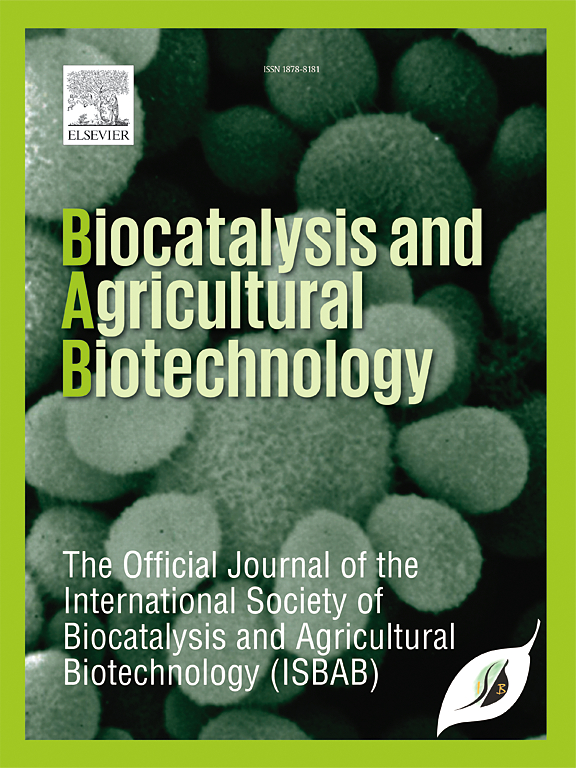Biotechnological valorization of yeast strains for lipids and carotenoids production from renewable resources
IF 3.4
Q2 BIOTECHNOLOGY & APPLIED MICROBIOLOGY
引用次数: 0
Abstract
This study aimed to select yeast strains from the Agricultural Microbiology Culture Collection (CCMA) to produce lipids and/or carotenoids using crude glycerol and sugarcane molasses as alternative carbon sources. Among the selected strains, nine exhibited oleaginous characteristics, with Torulaspora maleeae (CCMA 0039) reaching the highest accumulation of lipid content (77.7%) in the glucose medium. Notably, the Exophiala spinifera (CCMA, 2073) strain exhibited 35% lipid accumulation in glycerol pure. Furthermore, Rhodotorula dairenensis (CCMA 945), Rhodotorula mucilaginosa (CCMA 0156), Rhodosporidium toruloides (CCMA, 2032) and Cystofilobasidium ferigula (CCMA 1623) were identified as carotenogenic. Crude glycerol has proven to be the most effective medium for lipogenesis and carotenogenesis, also expressing diversity in fatty acid profiles, with C. ferigula demonstrating promise in the coproduction of lipids and carotenoids, achieving 41.88% lipid accumulation and 2.76 μg/mL of total carotenoids. These findings highlight the potential for utilizing industrial by-products for the sustainable production of important metabolites, paving the way for their integration into industrial bioprocesses.

求助全文
约1分钟内获得全文
求助全文
来源期刊

Biocatalysis and agricultural biotechnology
Agricultural and Biological Sciences-Agronomy and Crop Science
CiteScore
7.70
自引率
2.50%
发文量
308
审稿时长
48 days
期刊介绍:
Biocatalysis and Agricultural Biotechnology is the official journal of the International Society of Biocatalysis and Agricultural Biotechnology (ISBAB). The journal publishes high quality articles especially in the science and technology of biocatalysis, bioprocesses, agricultural biotechnology, biomedical biotechnology, and, if appropriate, from other related areas of biotechnology. The journal will publish peer-reviewed basic and applied research papers, authoritative reviews, and feature articles. The scope of the journal encompasses the research, industrial, and commercial aspects of biotechnology, including the areas of: biocatalysis; bioprocesses; food and agriculture; genetic engineering; molecular biology; healthcare and pharmaceuticals; biofuels; genomics; nanotechnology; environment and biodiversity; and bioremediation.
 求助内容:
求助内容: 应助结果提醒方式:
应助结果提醒方式:


